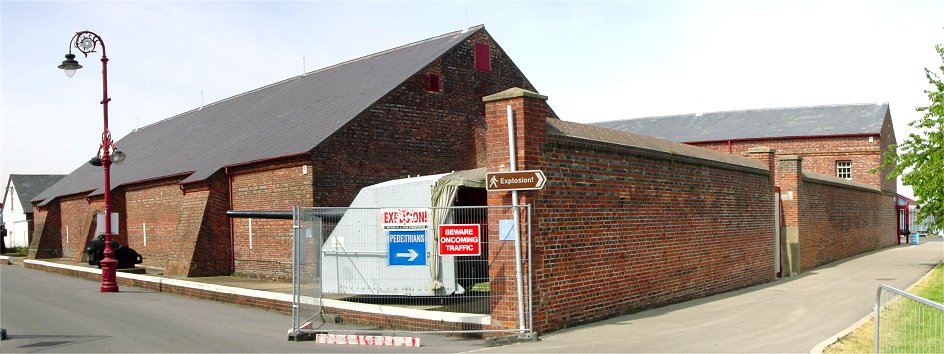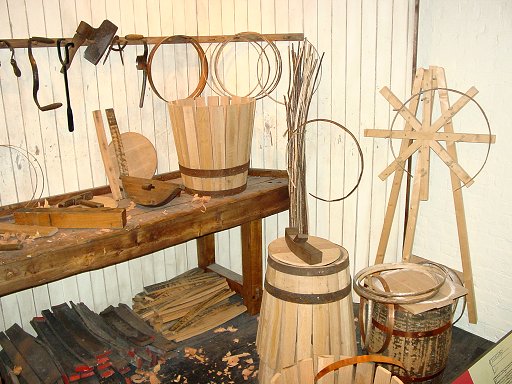
Priddy's Hard
The decision was made in 1760s to move the gunpowder store from the Square Tower in Portsmouth to Priddy's Hard, near the right end of the Gosport defensive lines. This would be the first time Britain separated its gunpowder stores from its ordnance stores, and this example was later followed elsewhere, particularly at Plymouth.
Construction of this Board of Ordnance facility began in 1771, and it was completed in 1777. Plans for two additional magazines adjacent to the grand magazine were cancelled because of the proximity of the Weevil Victualling Yard. Gunpowder storage capacity was therefore inadequate, so during the Napoleonic Wars powder was stored in hulks in Portsmouth Harbor. This, however, endangered warships, but fortunately no disaster resulted. For a time, the facility housed "Explosion", a museum of naval ordnance, which is now closed.


Grand Magazine and Cooperage
| The Grand Magazine was designed to store 4,500 barrels
of gunpowder compared to over 5,000 at Upnor Castle
and 7,200 in Tilbury,
for example. A vaulted brick roof provided protection from indirect fire. A
wall surrounding the magazine further protected the powder by keeping away
things like ferrous metal and people stupid enough to smoke around explosive
material. Barrels to
store the powder were put together in the cooperage next door. Old ruined
powder was reworked in the nearby sifting house in order to extend its life.
|

Cooperage Exhibit in "Explosion" |


Camber, or Basin
Boats entered the octagonal basin and loaded barrels of gunpowder to take back to warships. As can be seen here, this was only possible at high tide. In the distance on the left side of the bottom panorama can be seen the high ground upon which the Palmerston forts were built in the mid 1800s. The distant masts on the left side of the first pan and on the right of the second pan mark the location of the Portsmouth Dockyard.


Beginning in the 1800s and lasting into the early 1900s, the facility at Priddy's Hard was expanded, and a small rail line was installed.

Millennium Bridge
Water separated the Priddy's Hard facility, seen as the buildings beyond the bridge, from the Royal Clarence Victualling Yard, the successor to the Weevil Yard, which was on the far right of the panorama. The loopholed brick wall at right must have been part of the defenses of Royal Clarence.